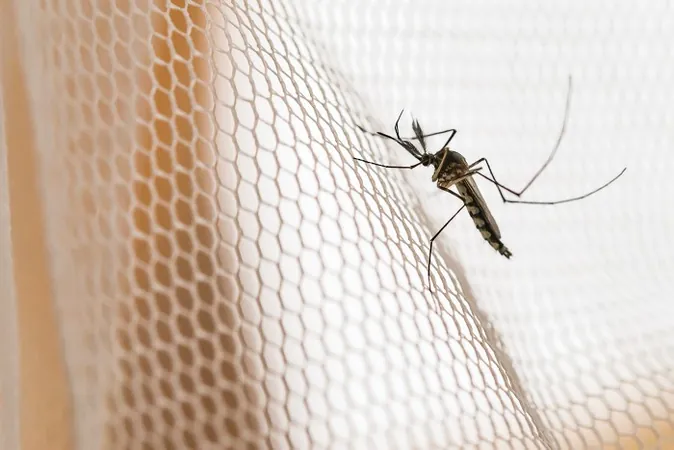
Revolutionizing Malaria Defense: Mosquito Nets with a New Chemical Edge
2025-05-21
Author: Daniel
A Bold New Strategy Against Malaria
In the ongoing battle against malaria, traditional mosquito nets are now equipped with a groundbreaking chemical innovation designed to tackle one of the deadliest diseases in the world. While these nets have been a budget-friendly solution, the infamous malaria-carrying mosquitoes are adapting, developing resistance to the insecticides we’ve relied on for so long. Enter a revolutionary approach: instead of killing the mosquitoes, researchers have crafted compounds that obliterate the malaria parasites residing within!
A Game-Changer in Protection
According to the latest findings published in *Nature*, scientists are harnessing a new arsenal of affordable, long-lasting chemicals that can potentially be woven into mosquito nets to thwart the transmission of malaria. Alexandra S. Probst, a key researcher involved in this project from Harvard T. H. Chan School of Public Health, shares, “This strategy is pretty straightforward, but it’s one that we have not really tried to implement in the field before.”
Targeting Parasites, Not Mosquitoes
The research team meticulously screened various antimalarial compounds, pinpointing those that effectively eradicate *Plasmodium falciparum*, the parasite responsible for malaria, directly in live mosquitoes. By applying these compounds to surfaces that mosquitoes encountered, they innovated with two endochin-like quinolones (ELQs)—named ELQ-453 and ELQ-613. These chemicals target vital proteins in the parasites, ensuring they can thwart the disease at its source.
Long-Lasting Effects Proven
After testing, the scientists discovered that when ELQs were incorporated into the polymers of mosquito nets, they remained potent even after a year of rigorous lab conditions. This is especially promising for regions heavily affected by malaria.
A Global Impact Awaiting Implementation
David A. Fidock, a malaria specialist at Columbia University, emphasizes the significance of this research, noting how U.S. National Institutes of Health funding can lead to drastic improvements in public health. He points out that in 2023 alone, malaria claimed the lives of nearly 600,000 people, predominantly young children in Africa. He believes that integrating these new antimalarials into insecticide-treated nets could save countless lives.
What’s Next?
As we stand on the brink of a potential breakthrough, the hope is to see these innovative nets deployed widely in malaria-prone areas, not only protecting communities but redefining our approach to combating this age-old disease.


 Brasil (PT)
Brasil (PT)
 Canada (EN)
Canada (EN)
 Chile (ES)
Chile (ES)
 Česko (CS)
Česko (CS)
 대한민국 (KO)
대한민국 (KO)
 España (ES)
España (ES)
 France (FR)
France (FR)
 Hong Kong (EN)
Hong Kong (EN)
 Italia (IT)
Italia (IT)
 日本 (JA)
日本 (JA)
 Magyarország (HU)
Magyarország (HU)
 Norge (NO)
Norge (NO)
 Polska (PL)
Polska (PL)
 Schweiz (DE)
Schweiz (DE)
 Singapore (EN)
Singapore (EN)
 Sverige (SV)
Sverige (SV)
 Suomi (FI)
Suomi (FI)
 Türkiye (TR)
Türkiye (TR)
 الإمارات العربية المتحدة (AR)
الإمارات العربية المتحدة (AR)